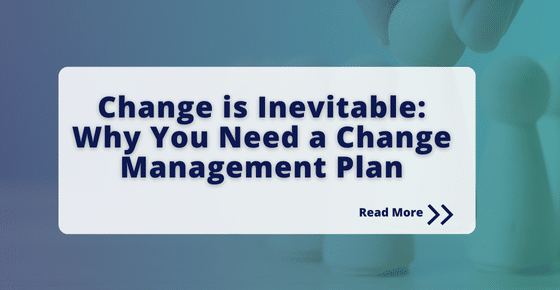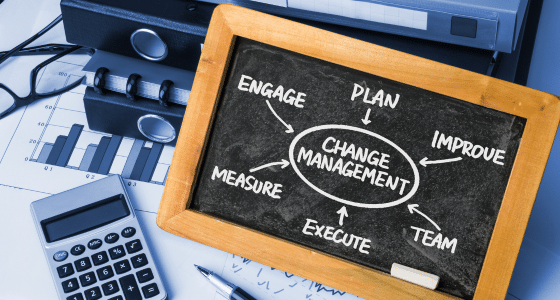Human Capital Management
Change is Inevitable: Why You Need a Change Management Plan

Change is inevitable in the business world. Whether it’s implementing new technologies, restructuring teams, or adapting to market shifts, organizations constantly face the need for change. However, managing these changes effectively can make the difference between success and struggle. Recent studies report that 70% of change initiatives are ineffective or fail due to poor planning and project management. This is where a well-crafted change management plan becomes indispensable for both business and HR leaders.
Types of Changes Requiring a Plan:
- Technological Implementations: Introducing new software, tools, or systems.
- Organizational Restructuring: Merging departments, realigning teams, changing reporting structures.
- Cultural Transformation: Shifting company values, fostering a new corporate culture.
- Policy & Process Improvements: Streamlining workflows, optimizing operational efficiency, and promoting new behavioral expectations.
- Strategic Shifts: Adapting to new market conditions, pivoting business strategies.
What to Include in a Change Management Plan:
A comprehensive change management plan typically includes the following essential elements:
- Clear Vision and Objectives: Define the purpose and expected outcomes of the change initiative. Communicate these goals effectively across the organization.
- Stakeholder Analysis: Identify all stakeholders impacted by the change. Understand their concerns, motivations, and roles in the process.
- Behavior Change Analysis: Map out all processes and expected behaviors that will be changing and use this as a framework for both training and communication.
- Communication Strategy: Develop a detailed communication plan that addresses how, when, what and by whom information will be shared with stakeholders at each stage of the change.
- Leadership Support: Secure visible and active sponsorship from senior leaders who can champion the change and motivate others.
- Training and Development: Assess training needs and provide resources to help employees develop the skills required to adapt to the change.
- Change Readiness Assessment: Gauge the organization’s readiness and understanding of the change through surveys, feedback mechanisms, or readiness assessments.
- Risk Management: Anticipate potential obstacles or resistance to change. Develop strategies to mitigate risks and address challenges promptly.
- Identify Special Populations: Flag groups who may require special attention or whose new process may fall outside of the majority.
- Feedback Mechanisms: A critical component of the plan is to establish mechanisms for gathering feedback throughout the change process. Use this input to adjust strategies and address concerns in real time.
- Evaluation and Adjustment: Continuously monitor the implementation of the change. Evaluate its impact on the organization and make adjustments as necessary to ensure success.
In today’s dynamic business environment, the ability to manage change effectively is not just a competitive advantage but a necessity. Business and HR leaders who invest in developing and executing a robust change management plan are better equipped to navigate challenges, minimize disruption, and foster a culture of resilience and agility within their organizations. By prioritizing structured change management practices, leaders can steer their teams toward sustainable growth and success in an ever-evolving marketplace.
At Exude Human Capital Consulting, we specialize in helping organizations create change management plans that align with their unique culture and business objectives. Contact us today to discover how we can collaborate to enhance your organization’s competitive edge in today’s evolving marketplace.








